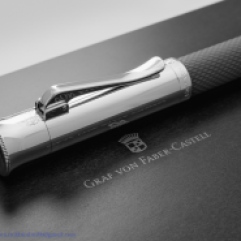Today, I would like to introduce two microphones that are manufactured by the company Microtech Gefell.
Just for your information, I am not related to or associated with any employees of the company or the owners. I also don’t want to go into too much detail about the company’s history; you can find all that on the internet: https://www.microtechgefell.de/
This is not a review, more a comparison.
Just listen to the audio samples (German). I have left the recordings completely raw (except for the conversion to the mp3 format, which is unavoidable due to the sheer size of 16-bit WAV files).
I am using the MOTU M2 audio interface, and I have set the gain on the MOTU M2 to about 1 o’clock position. I tried to maintain a distance of 15cm for both mics. However, I also tried the close-miking technique, where the distance was about 5cm. A pop filter was also used.
To minimize room reverb and ambient noise, I used a Vocal Head Booth, which you can purchase here: https://www.thomann.de/de/t.akustik_vocal_head_booth.htm (see a review here: https://www.nibbinibnibb.com/2023/09/11/the-effect-of-the-vocal-head-booth-for-voice-recordings-english-translation/
You don’t need to read the following text because I recorded it along with what’s mentioned above (or something similar) and it’s available below for you to listen to. If you want to hear the differences, I recommend using headphones.
Microtech Gefell MT 71 S
This microphone has a switch for low-frequency roll-off at 90Hz. This is also known as “bass roll-off” or high-pass filter. It’s a cow’s tail filter, not a bell filter. Its purpose is to mitigate the effects that occur during close-miking – an amplification of the bass tones in the voice – so that the voice doesn’t sound too dull. This effect can also be addressed effectively using equalizers in appropriate software. Bass reduction works well for some voices but not for others. I’m not so sure about it for my voice.
Microtech Gefell M930
This large-diaphragm microphone, like the MT71S, has a cardioid polar pattern. It is sold in three versions: with a wide cardioid pattern (M950), supercardioid pattern (M940), and a “normal” cardioid pattern, like the M930 I have here. Like the MT71S – and like all large-diaphragm microphones I’m familiar with – it requires 48-volt phantom power.
My usual distance from the microphone is around 15cm, but I will get very close (5cm) in the sound examples to demonstrate the close-miking effect on this microphone. The voice not only sounds louder but also richer. Depending on your taste, you could even say it sounds deeper. I leave that to the discerning listener.
To minimize this effect, the MT71S has the mentioned switch built-in, which the microphones in the M9x0 series do not have. You can reduce bass frequencies with plugins or stand-alone equalizers, giving you more control over the extent of the effect. I tried to demonstrate this with the sound file I recorded with the M930. In an extreme way, so you can notice the effect (the screenshot of the equalizer shows the effect graphically).
Above: Speech sample of Microtech Gefell MT 71 S.
Above: Speech sample of Microtech Gefell M930.
Above: Speech sample of Microtech Gefell M930 with software-based (strong) bass roll-off – see the illustration below. This speech sample is the same as above, but here, the mentioned roll-off has been applied. Acoustica 7 bass roll-off Bass roll-off using an equalizer. Here, in an amplified form. Matching the above audio file. The terms “cow’s tail” and “bell” refer to the expressions used in the speech sample.

Microtech Gefell M930 Microtech Gefell M930 – cardioid condenser microphone.

Microtech Gefell MT 71 S

























































































Leave a comment